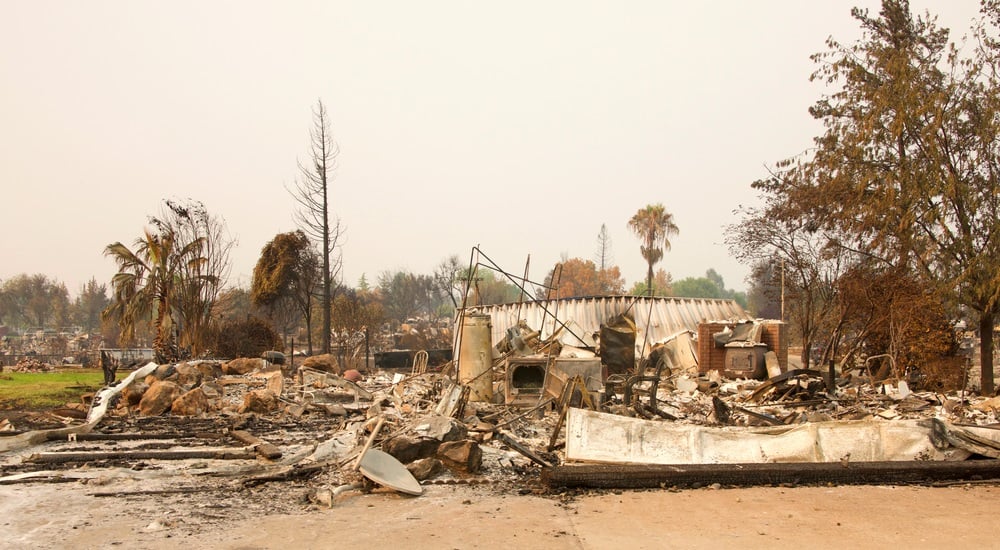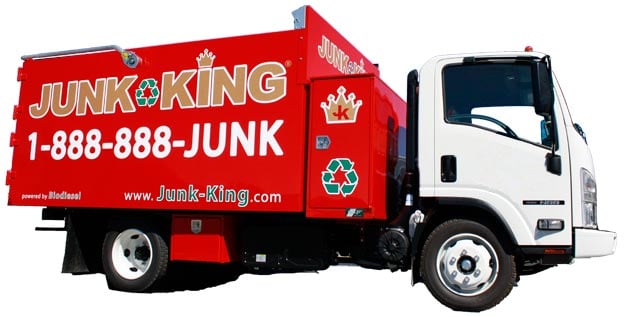
(This article was originally posted on October 19, 2017. Due to the recent Kincade fire that has impacted residents of Sonoma County, it has been updated and re-published.)
Beginning on October 23, 2019, northern California experienced another devastating wildfire, the largest in Sonoma County history, which saw the destruction of almost 78.000 acres and over 370 structures, with more than 170 of them being homes.
Much like the Tubbs fire from two years ago, there will be massive cleanup, some of it involving hazardous waste, that may take months and will be done mostly by experts.
The problem is that many homeowners who have lost their homes will want to go back and begin to clean up and rebuild. But the cleaning is a job they will likely not be allowed to do, unfortunately.
Officials will be coordinating with both federal and state agencies to planning post-fire cleanup in the hardest hit areas of Sonoma County. In the meantime, tens of thousands of evacuees have returned home to intact houses, but many with smoke damage and covered with ash.
The County of Sonoma offered this advice for those looking to deal with these issues:
“Fire ash may be irritating to the skin, nose, and throat may cause coughing and/or nose bleeds. Fine particles can be inhaled deeply into lungs and may aggravate asthma and may make it difficult to breathe.
-
Refrain from cleaning ash and fire debris until professional hazardous material cleanup services are secured. Seek professional damage and debris removal/restoration services.
-
When exposure to dust or ash cannot be avoided, use a well-fitted NIOSH-certified air-purifying respirator N-95 mask.
-
Children should not be in the vicinity while cleanup is in progress. Even if care is exercised, it is easy to stir up ash that may contain hazardous substances.
-
Clean ash off house pets and other domesticated animals if they have been in contaminated areas.
-
It is best to not allow pets in these areas due to the potential risk to their health and their ability to spread outside of contaminated areas.
-
Wear gloves, long-sleeved shirts, and long pants to avoid skin contact. Goggles are recommended. Contact with wet ash may cause chemical burns or irritation on skin. Change your shoes and clothing prior to leaving the decontamination site, to avoid tracking ash into your car, home, etc.”
Homes that were exposed to wildfire smoke and ash should have its contents properly inspected, tested, cleaned, treated and restored to pre-exposure condition. Damage to homes and possessions by smoke and ash may be covered in the homeowner’s insurance policy and homeowners should contact their insurance company before beginning cleanup to learn more about their coverage and how to properly file a claim.
In addition, the American Red Cross offers tips for cleaning up and removing smoke odor here: https://www.redcross.org/get-help/how-to-prepare-for-emergencies/types-of-emergencies/fire/cleaning-up-after-fire.html
Hazardous Waste Materials Make Cleanup Toxic and Dangerous
Two years ago after the devastating Tubbs fire, the U.S. Environmental Protection Agency (EPA) oversaw the cleanup, the first phase of which involved removal of hazardous waste and toxic materials from the over 5,600 destroyed homes and businesses. The toxic materials included batteries, electronic waste, paint and solvents, flammable liquids, and materials that contained asbestos.
The second phase of the cleanup involved the removal of non-toxic waste and debris. This required scraping away ash, concrete, metal and contaminated soil in all seven of the affected counties. According to government spokespersons, when the cleanup work was completed, homeowners would receive a certificate indicating their property has been properly cleaned and eligible for local building permits.
Post-Fire Cleanup and Debris Removal is Not a DIY Task
Now, as then, officials advise that, while homeowners can hire qualified private contractors to clear their land of the hazardous and toxic material, it’s not advisable for people to attempt the post-fire cleanup themselves. As noted by the County of Sonoma’s website, sifting or shoveling settled ashes and debris causes them to become airborne again, exposing people to toxic materials, including carcinogens.
Disposing of this material is complicated and restricted, as well. Burned material cannot be placed in trash cans or hauled to a local landfill.
The dangers of cleanup are equally true for commercial properties, however, the costs for those cleanups will likely fall on the property owners.
In most situations the government does not pay for cleanup of commercial property. This policy is based on the assumption that the owners have adequate insurance. However, if the debris on commercial sites are deemed to pose a threat to public health or the environment, it can often be removed at government expense.
The bottom line is that individual property owners will not be allowed to conduct any significant cleanup on their own, and finding an approved and certified contractor can be difficult as well as costly. In light of the dangers and difficulties involved, it is best to leave the cleanup to the experts.
If you live in Sonoma County or one of the neighboring counties impacted by the recent wildfires you can obtain up to date information here.



